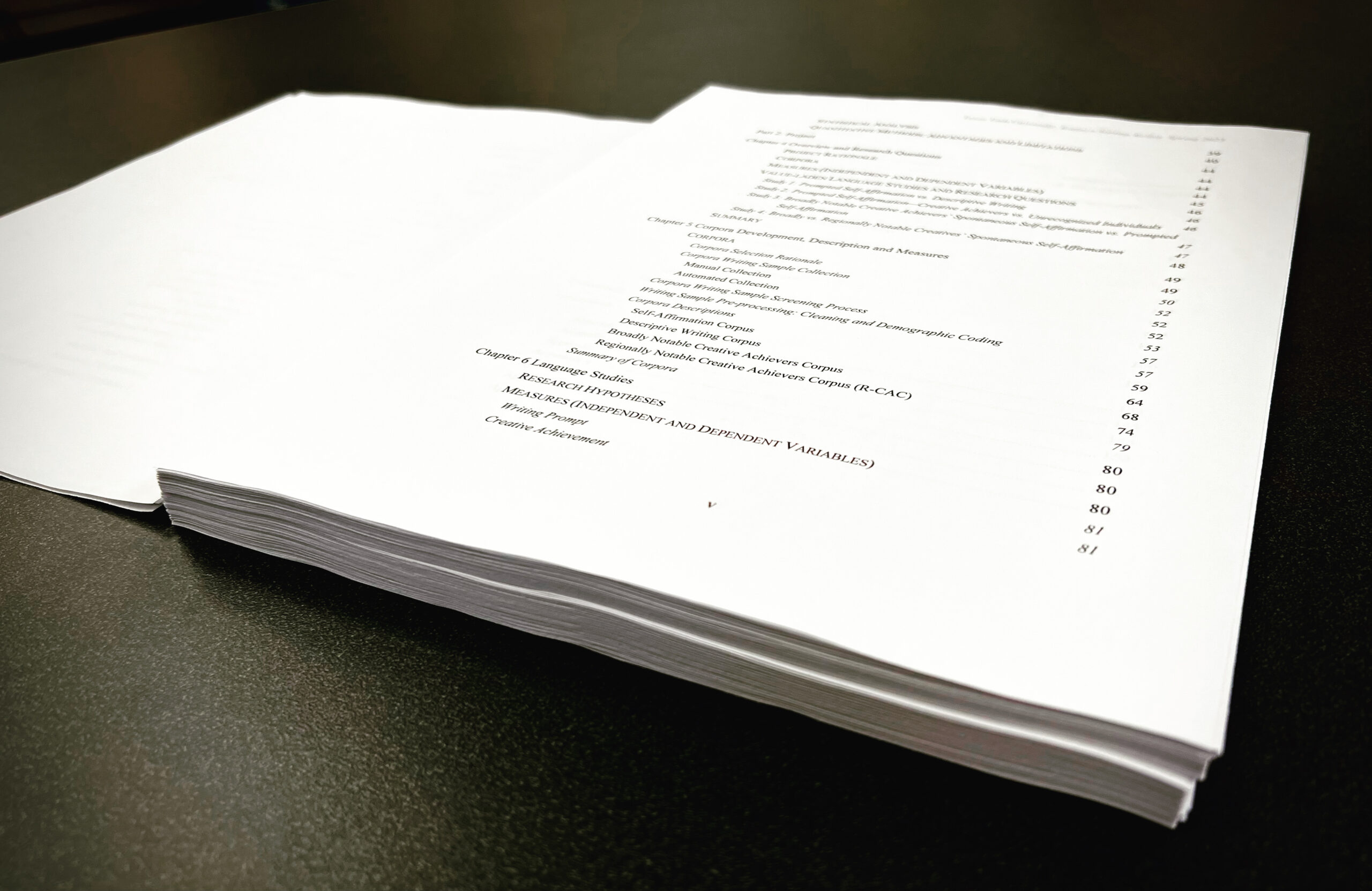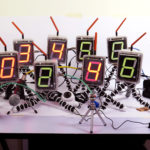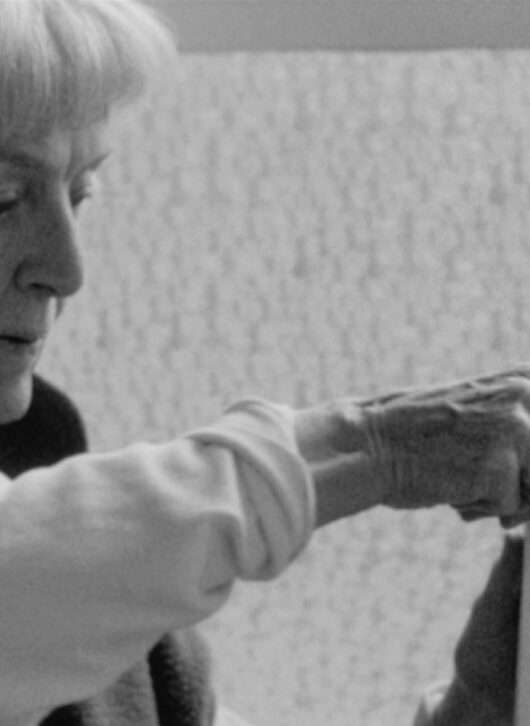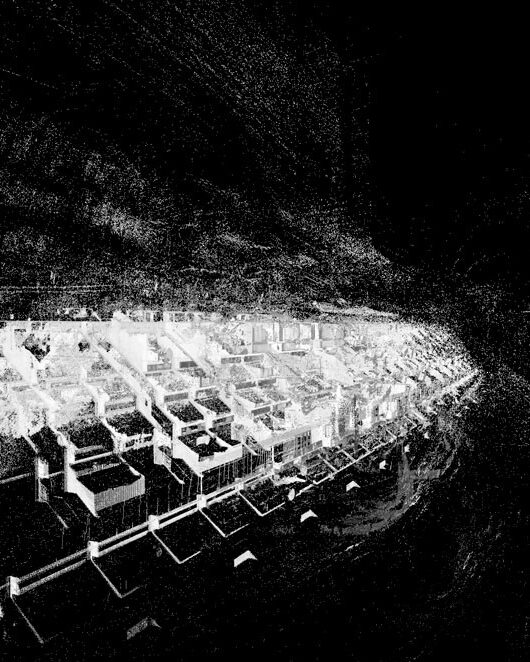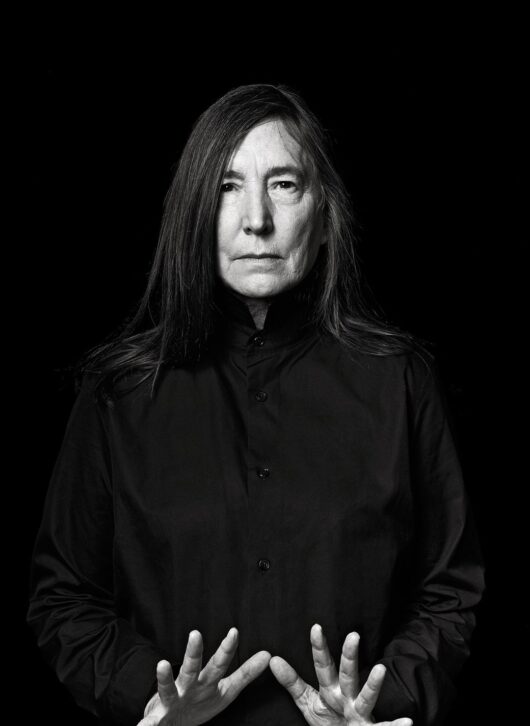Troubling Artist: Doing gender as a framework for exploring the repetitive stylized acts of doing artist

Eva Hesse with the sculpture 1969. Photo Hermann Landshoff.
I don’t think I ever did any traditional paintings except what you call abstract expressionist. I didn’t even do much sculpture in school and once I started out, there wasn’t anything traditional about any of my pieces. I don’t know if I am completely out of the tradition. I know art history and I know what I believe in. I know where I come from and who I am related to or the work that I have looked at and that I am personally moved by and felt close to or am connected or attached to. But I feel so strongly that the only art is the art of the artist personally and found out as much as possible for himself and by himself. So I am aware of connectiveness – it is impossible to be isolated completely – but my interest is in solely finding my own way. I don’t mind being miles from everybody else. I am not, now, possibly. Critics, art historians, museums and galleries do like to make a movement for their own aims and for art history and to make people understand, but I wonder about that. In that way I have been connected to other people, but I don’t mind staying alone. I think it is important. The best artists are those who have stood alone and who can be separated from whatever movements have been made about them. When a movement goes, there are always two or three artists. That is all there is. — Visual Artist, Eva Hesse, 1970. 1
Troubling Artist: Doing gender as a framework for exploring doing artist
Troubling Artist: Doing gender as a framework for exploring doing artist
(still proof reading)

Eva Hesse, Photo of Hesse holding Ingeminate, 1965 (Columbia Univ)
This is a preliminary probe into parallels that exist between doing gender and doing artist. Concepts of being and doing artist will be recast in light of Judith Butler’s notions of troubling and gender regulation, production, resistance and subversion as they relate to performativity and visual artist identity constitution.[1], [2] It is with the intent to create a framework to understand practices that might be involved in constituting artist. A practice of particular interest involves the trend that these visual artists’ who enact a troubling of conventions in their work—whether through materiality, form, process, presentation, subject matter, or theme—also write. It is my hope that this initial framework may provide insight into how the act of writing may function as a stylized repetitive act involved in creative passion and persistence as it relates to identity maintenance.[3]
To initiate this pursuit I have converted two pivotal texts often quoted from Gender Troubling into the language of artist—dropping gender and replacing it with artist or like term. Conversion of these quotes emphasizes that the artist’s sense of self, like gender, is continually fabricated on the fly from various acts, postures, gestures that substantiates themself as recognizably artist relative to cultural conventions. Italics denote the substitutions.
Artist ought not to be construed as a stable identity or locus of agency from which various acts follow; rather, artist is an identity tenuously constituted in time, instituted in an exterior space through stylized repetition of acts. The effect of artist is produced through the stylization of the body, and body of creative works, and, hence, must be understood as the mundane way in which bodily gestures, movements and styles of various kinds constitute the illusion of an abiding self, of a particular kind of artist.[4]
…
Artist reality is performative which means, quite simply that it is real only to the extent that it is performed. It seems fair to say that certain kinds of acts are usually interpreted as expressive of a particular artistic core or identity and that these acts either conform to an expected artistic praxis (particular kind of artist) or contest that expectation in some way.
The expectation, in turn is based upon the perception of artist, where artist is understood to be the discrete and tactic datum of primary characteristics of particular artistic praxis…This implicit and popular theory of acts and gestures as expressive of artist itself is something prior to the various acts, postures, and gestures by which it is dramatized and known, indeed, artist to the popular imagination as a substantial core which might well be understood as spiritual or psychological correlate of biological abilities. If artist attributes, however, are not expressive but performative, then these attributes effectively constitute the identity they are said to express or reveal.[5]
These altered quotes read commonsensical to my minds eye and align with generally accepted mechanisms of social identity theory as outlined by Richard Jenkins in his text Social Identity.[6] Jenkins notes that the mechanisms of establishing social identity transcend the individual. They are not only the methods for resolving one as socially recognizable but function in establishing categorical understandings of creatures, things, events and substances—rendering each communally legible.[7] Categorical systems are conscious and unconscious downsamplings, detail compression, reducing and the overwhelming amount of data available in any given field of experience and history. This is done in order to discern relevant, valuable, information. [8] Categorical systems of identification further employ degrees of disregard or devaluation of difference, categorical overlaps and misplacements. [9] Downsampling, disregard and hierarchical value structuring of data sets are necessary because of limited neurological perceptual and cognitive processing capacities.[10] They minimize the cognitive load in ways that allow for the appearance of stable identity and communal comprehension. Systems of identification are the basis of social norms, conventions.
There are no artists, however, who are immune to being affected and influenced by the social-political value-system of the society in which they live and of which all cultural agencies are a part, no matter if they are ignorant of these constraints or not (‘artist’ like a ‘work of art’ are put in quotation marks because they are predicates with evaluative connotations deriving their currency from the relative ideological frame of a given cultural power group)… Artists…participate jointly in the maintenance and/or development of the ideological make-up of their society. They work within that frame, set the frame and are being framed. – Hans Hooch[11]
The Conceptual Metaphor Theory (CMT) claims that categorical knowledge is generated comparatively, as with the knowledge of oneself and other.[12] Comparativity is a pivotal method of downsampling data. The basis of CMT is that one understands this from that and that from this. In isolation this or that by itself cannot be understood. Thus this and that are conceived through registering their comparative similarities and differences. The ascription of meaning is dependent on these relationships. Individuals ascribe categorical meaning to themself and others relative to the available this and thats in order to make sense of the world.[13]
I began to see my life as somewhere between these two orders of the natural and the abstract, belonging entirely neither to the one nor to the other…My hope was that if I did this (writing as artist) honestly I would discover how to see myself from a perspective that would render myself whole in my own eyes. – Anne Truitt[14]
CMT also suggests that the beingness of this or that correlates with how both function in the world. Being, this, is recognized in terms of doing, that. Or more simply put by Forest Gump as he countered the categorical label of being stupid, “stupid is as stupid does.” The quality of being stupid is only understood by a particular set of acts as they compare with acts of doing smart. So it is with the Butlerian topic of gender identity construction, gender is as gender does within the current context of this or thats regardless of personal awareness. Therefore the implicit and explicit production of identity, knowledge of self and other, and how they relate, whether in terms of gender, stupidity or artist, resolves through an enacting and accounting of repetitive stylized acts within the dictates of established and evolving cultural categories of knowing. [15]
Yet Butler’s attentions appear bound to understanding gender construction only as they relate to perceived inadequacies, injustices and suffering that arise in the binary system of gender rendering that does not account for differences. Identity performances that fall outside of definitional norms disrupt particular paradigms of cultural knowing which necessarily destabilizes the relationship of convention to individual(s), individual to group, and group to convention. Departures from downsampled cultural data and/or its hierarchical structure, rivets attentional focus. Being and doing that rent the structured data set of how one is to be in the world and with one another risks uncovering deficits, outdated or corrupt conventional standards. In lieu of the prospect of the untenable, action toward reestablishing authenticity of convention, the collective and/or individual is executed. When authentication is performed through discounting, suppressing or dismissing the perpetrator of difference as faulty or inauthentic, instead of adapting an inadequate convention, suffering and injustices result.
Traumatic events call into question basic human relationships. They breach the attachments of family, friendship, love, and community. They shatter the construction of the self that is formed and sustained in relation to others…When I attempted to defend myself I would be described as difficult and more harshly as crazy.
If it had not been for my intense passion for reading, I would not have learned to stand back from family and observe. I would not have developed a practice of detachment that empowered me to critically question and resist. – Bell Hooks[16]
Yet, typically both the perp and community perform this discounting and suppression. It is a form of consensual discrimination that hierarchically values collective categorical definitions over the individual.[17] Butler classifies this entire situation as troubling. Her use of troubling is three fold for troubling denotes the arousal and complications that occur for and within the individual whose performance of identity defies convention. It is also expressive of the unsettling occurrence in others from the disruption and the re-rendering of convention to substantiate their own identity practices. Further, troubling marks the perturbation of convention itself through the risks and ramifications of its validity and undoing.

Eva Hesse in her Bowery Studio, circa 1967. Photo: Herman Landshoff. © The Estate of Eva Hesse. Courtesy Hauser & Wirth / Münchner Stadtmuseum, Sammlung Fotografie, Archiv Landshoff.
This multimodal troubling is the nexus of all Butler’s theoretical writings. Her framework reveals the interconnectedness of identity constitution, convention, suffering, stasis and change with troubling. The corollaries Butler makes seem to lie at the heart of doing and being artist. This provides a viable foothold for gaining ground in understanding the practices of doing artist.
TROUBLING IS DOING ARTIST
Artist is commonly ascribed to the troubled individual who then proceeds to make trouble, creatively! [18] Artist is the proverbial TROUBLEMAKER. The very definition of creativity, creative behavior, hinges on the development and application of alternatives to convention.[19] The creative act in providing potentially viable cultural alternatives challenges the validity, relevance and/or justice of particular schemas. Artists are tolerated, even given prestigious social positions, in function as both cultural barometer and innovator. Yet an artist is not free or immune from being affected and influenced by societal systems. An artist moves within cultural “frames, sets the frame and is being framed.”[20]
Relating this back to gendered frames, the artist does not stand outside of normative systems but queers particular norms, much as the transgendered disrupts the binary validity of male-female yet still generally aligns with either a masculine or feminine practice. But unlike the transgendered whose troubling historically has been suppressed, dismissed and couched as a fault in the individual, the artist’s performative disruption of being and doing is accepted, even expected within limits. So the category of artist is socially constituted and inherently paradoxical.[21]

Eva Hesse, Untitled (7 poles), view in studio, fiberglass over polyethylene over aluminum wire, 7 units, 7’Õ2″–9’3Õ” tall. Columbia Univ
Social and gender theory suggests that conforming to conventional definitions stabilizes social identity and contrariness destabilizes. But also when conformity is experienced as inauthentic there again arises destabilization. Constituting artist necessitates an odd relational simultaneity of stable and unstable, conventional and unconventional. This raises all sorts of questions. Pragmatically then, what does it mean to be stable as artist? Is the artist stable in the unstable but then unstable in the stable? Does artist require perpetual re-stabilization and de-stabilization? Is there a particular point between the stable and unstable identity configuration that must be negotiated to maintain artist and creative productivity? Though these questions are not addressed in this paper, they are relevant to this project’s larger scope in that writing for the artist may play a role in navigating stability and instability, in constituting a livable identity.
Ironically, a lot of the self-destruction I feel in myself and see around me comes from feeling so helpless beneath these oppressive social systems that degrade us…We need to deal with all the parts of ourselves— habits, behaviors, rituals— on their own, instead of constantly attacking our core identity. Instead of insisting upon dramatic either/ or understandings of wellness, we must accept that we are all in states of change. Striving for incremental change allows for sustainable self-healing, and gives us the ability to lessen the harm instead of trying (in vain) to eradicate it. Change is good, necessary, and inevitable. Instead of there being one fixed reality, life is more of an identity continuum. – Bonfire Madigan Shive[22]
There is an exhaustive line of psychological inquiry into creativity, mood regulation and artistic production. What I have derived from an initial review is that useful creative production is linked with activating states of arousal. Too much or little arousal results in passivity.[23] As something becomes unstable, troubled, it arouses attentional focus and action; stable things commend less attention or action. This suggests that if activating arousal is required for creative production, then a degree of instability, troubling, is necessary for performing artist. Further then the artist to be persistently productive in a mode that leads to cultural change, there must be maintenance of a range of arousal that does not pacify creative action.
My crisis plan allows me to name and validate my experience, while transferring the energy of that feeling into an activity…I call this process “allowing yourself to be shaken so that you’re changed, and through your transformation, you change the system.” That’s when we’re actively participating in our own liberation. – Bonfire Madigan Shive[24]
* * *
It is taxing to think out and then maintain a view of one’s self that is realistic… My hope was that if I did this (writing as artist) honestly I would discover how to see myself from a perspective that would render myself whole in my own eyes. – Anne Truitt[25]
Transgender congruence is delineated as a sense of gender stabilization that manifests from a performative reconfiguration of the self as recognizable and acceptable—internally rendering the self as genuine, authentic and a of viable category.[26] Artist congruence then would seem to entail a sense of authenticity and validity derived from performative reconfiguration of the self as both legible and illegible within the streams of convention.

Eva Hesse in front of “Greed”
A correspondence between sculptress Eva Hesse[27] and conceptual artist Sol LeWitt[28] is an ideal case sample of the entire set of dynamics involved in the artist’s social identity constitution (being and doing artist) and troubling as discussed in this paper. It is clear in LeWitt’s response letter, included in the Appendix, that Hesse is seeking social confirmation in order to regulate her identity and unconventional art practice. It exemplifies a pursuit to reconfigure her self in order to stabilize her identity and reduce over arousal, anxiety, to within acceptable parameters. LeWitt’s provides stabilization for her being/doing through his clear approval of her and her work while recommending a continuation of unconventionality in practice—“The work you (Eva) are doing sounds very good… I have much confidence in you and even though you are tormenting yourself, the work you do is very good… And don’t think that your work has to conform to any preconceived form, idea or flavor… Try to do some BAD work”[29]
The parallels between doing artist with doing gender are not fully realized in this paper. It is a start. Further unravelment and a more precise intertwining of the two are still necessary. Nonetheless, Butlerian notions of troubling, gender constitution and performativity appear to provide a pragmatic system to account for the function of particular acts in the doing of artist, such as writing. I might even venture to predict that the act of writing, like gendered stylized repetitive acts, plays a role in resolving the illusion of a stable identity category from which the artist may find ground to continue particular forms of creative convention troubling.[30] More specifically, the writing practices may regulate arousal (stability) to optimal states for persistent creative production. But that is not a paper; it is a dissertation, a book, a series of books.
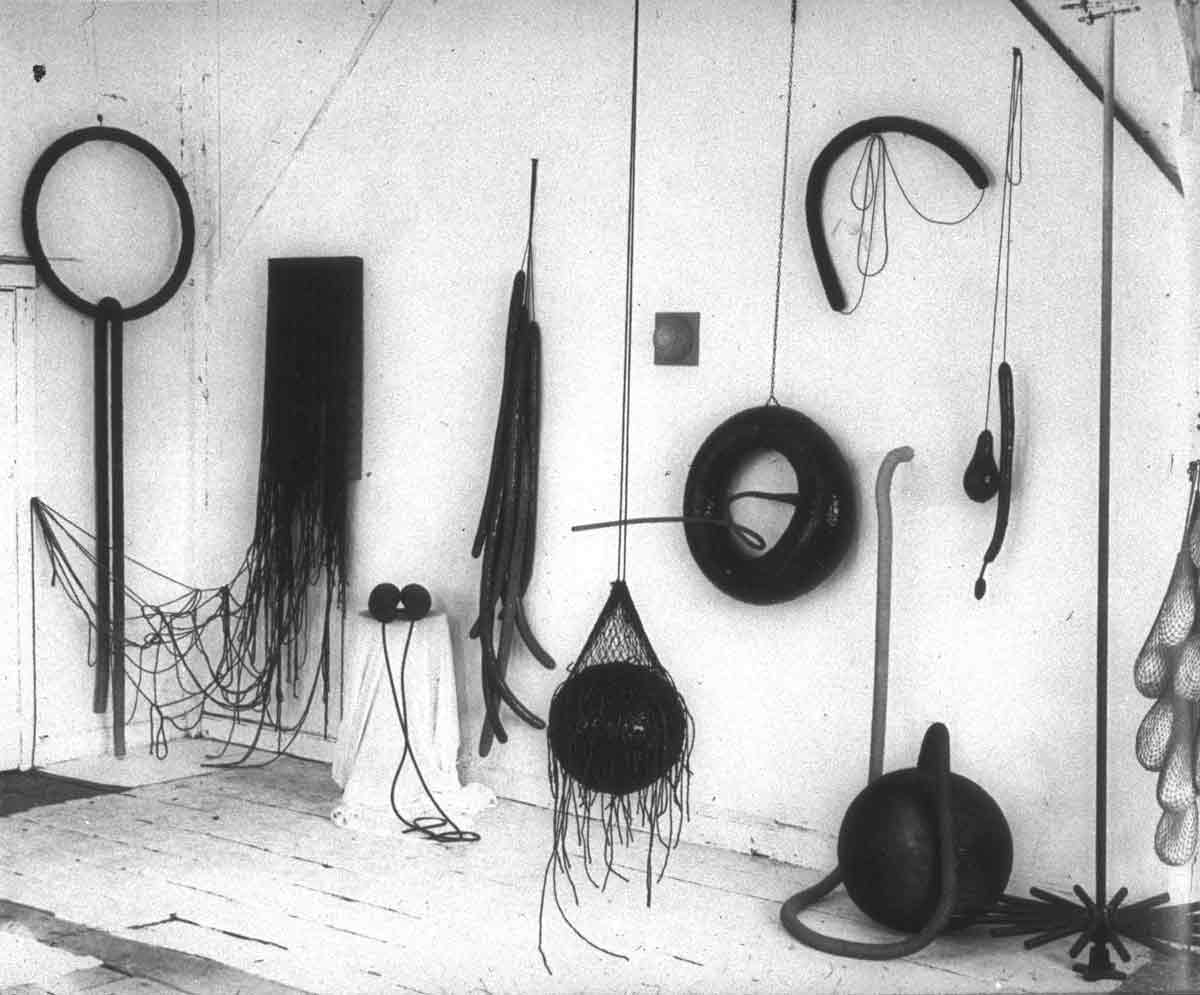
Eva Hesse,Photograph of Hesse’s studio, early 1966. http://www.learn.columbia.edu/courses/fa/htm/fa_ck_hesse_2.htm
Troubling Artist Letters: Sol LeWitt + Eva Hesse
Letters between Sol LeWitt and Eva Hesse, 1965
This letter is worth coding for sensitivity, arousal, stability, contrariness, compliance, etc. or as the Huffington Post claims, “Sol LeWitt’s Advice To Eva Hesse Is What Every Creative Person Needs To Hear.”
Dear Eva,
It will be almost a month since you wrote to me and you have possibly forgotten your state of mind (I doubt it though). You seem the same as always, and being you, hate every minute of it. Don’t! Learn to say “Fuck You” to the world once in a while. You have every right to. Just stop thinking, worrying, looking over your shoulder wondering, doubting, fearing, hurting, hoping for some easy way out, struggling, grasping, confusing, itchin, scratching, mumbling, bumbling, grumbling, humbling, stumbling, numbling, rumbling, gambling, tumbling, scumbling, scrambling, hitching, hatching, bitching, moaning, groaning, honing, boning, horse-shitting, hair-splitting, nit-picking, piss-trickling, nose sticking, ass-gouging, eyeball-poking, finger-pointing, alleyway-sneaking, long waiting, small stepping, evil-eyeing, back-scratching, searching, perching, besmirching, grinding, grinding, grinding away at yourself. Stop it and just DO!
From your description, and from what I know of your previous work and you [sic] ability; the work you are doing sounds very good “Drawing-clean-clear but crazy like machines, larger and bolder… real nonsense.” That sounds fine, wonderful – real nonsense. Do more. More nonsensical, more crazy, more machines, more breasts, penises, cunts, whatever – make them abound with nonsense. Try and tickle something inside you, your “weird humor.” You belong in the most secret part of you. Don’t worry about cool, make your own uncool. Make your own, your own world. If you fear, make it work for you – draw and paint your fear and anxiety. And stop worrying about big, deep things such as “to decide on a purpose and way of life, a consistant [sic] approach to even some impossible end or even an imagined end” You must practice being stupid, dumb, unthinking, empty. Then you will be able to DO!
I have much confidence in you and even though you are tormenting yourself, the work you do is very good. Try to do some BAD work – the worst you can think of and see what happens but mainly relax and let everything go to hell – you are not responsible for the world – you are only responsible for your work – so DO IT. And don’t think that your work has to conform to any preconceived form, idea or flavor. It can be anything you want it to be. But if life would be easier for you if you stopped working – then stop. Don’t punish yourself. However, I think that it is so deeply engrained in you that it would be easier to DO!
It seems I do understand your attitude somewhat, anyway, because I go through a similar process every so often. I have an “Agonizing Reappraisal” of my work and change everything as much as possible = and hate everything I’ve done, and try to do something entirely different and better. Maybe that kind of process is necessary to me, pushing me on and on. The feeling that I can do better than that shit I just did. Maybe you need your agony to accomplish what you do. And maybe it goads you on to do better. But it is very painful I know. It would be better if you had the confidence just to do the stuff and not even think about it. Can’t you leave the “world” and “ART” alone and also quit fondling your ego. I know that you (or anyone) can only work so much and the rest of the time you are left with your thoughts. But when you work or before your work you have to empty you [sic] mind and concentrate on what you are doing. After you do something it is done and that’s that. After a while you can see some are better than others but also you can see what direction you are going. I’m sure you know all that. You also must know that you don’t have to justify your work – not even to yourself. Well, you know I admire your work greatly and can’t understand why you are so bothered by it. But you can see the next ones and I can’t. You also must believe in your ability. I think you do. So try the most outrageous things you can – shock yourself. You have at your power the ability to do anything.
I would like to see your work and will have to be content to wait until Aug or Sept. I have seen photos of some of Tom’s new things at Lucy’s. They are impressive – especially the ones with the more rigorous form: the simpler ones. I guess he’ll send some more later on. Let me know how the shows are going and that kind of stuff.
My work had changed since you left and it is much better. I will be having a show May 4 -9 at the Daniels Gallery 17 E 64yh St (where Emmerich was), I wish you could be there. Much love to you both.
Letter from Hesse that resulted in LeWitt’s above letter.

Huffington Post 3
Troubling Documentary Trailer: Eva Hesse
Eva Hesse is exemplar of discussion on TROUBLING
Snippet from the upcoming documentary, Eva Hesse, produced by Marcie Begleiter and Karen Shapiro, 2016.4
Snippet from upcoming documentary, Eva Hesse, produced by Marcie Begleiter and Karen Shapiro, 2016.5
See Hyperallergic interview with producers.
Troublings on Creativity and Self-destruction - excerpts
We need to deal with all the parts of ourselves— habits, behaviors, rituals— on their own, instead of constantly attacking our core identity. Instead of insisting upon dramatic either/ or understandings of wellness, we must accept that we are all in states of change. Striving for incremental change allows for sustainable self-healing, and gives us the ability to lessen the harm instead of trying (in vain) to eradicate it. Change is good, necessary, and inevitable. Instead of there being one fixed reality, life is more of an identity continuum. – Bonfire Madigan Shive 6
Traumatic events call into question basic human relationships. They breach the attachments of family, friendship, love, and community. They shatter the construction of the self that is formed and sustained in relation to others.
…
When I attempted to defend myself I would be described as difficult and more harshly as crazy. If it had not been for my intense passion for reading, I would not have learned to stand back from family and observe. I would not have developed a practice of detachment that empowered me to critically question and resist. – Bell Hooks 7
While writing, I began to discover this strange voice at the back of my throat, which didn’t sound like my old voice at all. It felt red and raw and powerful, and the more I wrote, the stronger it became. Each word seemed to chip away at my former identity and bring me closer to who I felt I really was. Writing had given me ownership over my own life. – Amanda Palmer 8
Ironically, a lot of the self-destruction I feel in myself and see around me comes from feeling so helpless beneath these oppressive social systems that degrade us.
…
My crisis plan allows me to name and validate my experience, while transferring the energy of that feeling into an activity that is healing.
…
I call this process “allowing yourself to be shaken so that you’re changed, and through your transformation, you change the system.” That’s when we’re actively participating in our own liberation. – Bonfire Madigan Shive 9
I was enacting epic confrontations. – Carolyn Gage 10
Writing has always helped me to focus, relax and situate myself within constantly shifting…environments. – Fly 11
I knew only one thing: write or die. – Inga Muscio 12
Imperfections. They are not who we are, they are simply the things that form us. – Amanda Palmer 13
…Most of them seemed to be just balancing on the edge. I tried to understand why they worked so hard to destroy instead of create, but eventually I realized they were calling on the (inverted) creative power of destruction, even if it was self-destruction.
…
I run this body, motherfucker! – Nicole Blackman 14
It (art making/writing) felt like home – Bonfire Madigan Shive 15
Troubling with Truitt
The “just me” reaction was, I think, an instinctive disavowal of the social role of the artist. A life-saving disavowal. I refused, and still refuse, the inflated definition of artists as special people with special prerogatives and special excuses. If artists embrace this view of themselves, they necessarily have to attend to its perpetuation. They have to live it out. Their time and energy are consumed for social purposes…
My hope was that if I did this (writing as artist) honestly I would discover how to see myself from a perspective that would render myself whole in my own eyes…
I began to see my life as somewhere between these two orders of the natural and the abstract, belonging entirely neither to the one nor to the other…
It is taxing to think out and then maintain a view of one’s self that is realistic. – Anne Truitt 16
Troubling APPENDIX (in need of much more work)
APPENDIX of Troubling
See upper tab for LETTER FROM SOL LEWITT TO EVA HESSE, 1965 (underlined items relate most directly to artistic troubling, doing artist and arousal and identity regulation)
Some initial thinking on:
PERSONHOOD: The artist’s identity, has been shown to arise from within the frame of troubling. Research psychologists have correlated seminal artists (and scientists) with histories of developmental adversity, psychological dispositions and/or psychopathology that express less deference/contrariness, perceptual sensitivities and/or cognitive flexibility, and/or situational chaffing. [32], [33], [34], [35], [36] It is thought that these individually or in combination for certain individuals reduce the drive to adhere to societal conventions and hierarchical structures. Thus these individuals are more likely to be open to alternatives to convention standards. Dated but still applicable, Carl Jung claimed the artist to likely be “disagreeable, bad mannered, but usually hit the nail (problematic convention) on the head…the artist is the unwitting mouthpiece of the psychic secrets of his time.” Jung goes on to say that artists, like prophets, pitilessly expose the rottenness of contemporary patterns of belief and behavior.
PROCESS: The creative PROCESS is a pursuit of alternatives to previously prescribed conventions, regularly requiring unconventional methodologies. In the field of psychology Creativity has been defined as the act of arriving at an alternate solution than is prescribed by current convention AND in a way that propels a field or series of fields forward or in new direction.[37] Everyday creativity involves tiny pushes counter to cultural practices but spurs no apparent longer-term changes. Capital C creativity pushes at particular bedrocks in conventions resulting in residual change. Doing artist is linked to capital-C creativity. Yet the artist must still balance them self within the frames of convention while simultaneously setting the frame.
PRODUCT: The resulting PRODUCT may initially be collectively unrecognizable in its relevance. Further the manner in which the artist, process and/or product is realized in relationship with the audience, PRESENTATION, may involve unorthodox dynamics.
POSITION: The artist is conventionally aligned relative to other vocations. Their position is socially constructed and has inherent constraints even as both cultural jammer and as “different”. There is a cultural prescribed weight, importance, PRESTIGE, bequeathed to the successful social positioning of the doings and being of artist. In each case—personhood, process, product, presentation, position—there is a precarious balance between the realizations of difference, of contrariness, as legible enough to result in cultural adaption and as dismissibly faulty or inauthentic. If the artist and/or work are too legible, not contrary, there is a sense of ordinariness and a reframing occurs—craftsman/designer versus artist, craft versus art. If the artist and/or work are not legible enough, relevance and viability go unrecognized—shunned into social oblivion.
Each P needs fleshed out further and additional categories to explore include: PARIDIGM, PASSION, PERSISTANCE and more on MOOD REGULATION.
FUN SIDE NOTE: I have already via quantitative psychometric analysis (computer assisted) of contemporary visual artists’ writings noted that artists appear to display higher frequencies of linguistic certainty, insistence and cognitive processes (causal thinking), and lower frequencies of the use of personal pronouns than the general population. My gut, which I generally trust, in conjunction with my social science literature reviews thinks these relate to both arousal regulation and the establishment of viable identity/genre categories. BAM. I think this is going to be a convoluted but fun research playground
Troubling Footnotes
[1] Judith Butler, Undoing Gender (New York: Routledge, 2004); Gender Trouble: Feminism and the Subversion of Identity (New York: Routledge, 1990, 1999).
[2] Vicki Kirby, “Gender, Sexuality, Performance — Gender Trouble; Feminism and the Subversion of Identity,” in Judith Butler: Live Theory (London: Continuum, 2006)
[3] Butler, 1990: 140.
[4] Butler, 1999: 179.
[5] Judith Butler, “Performative Acts and Gender Constitution: An Essay in Phenomenology and Feminist Theory,” Theatre Journal 40, no. 4 (1988): 527-28.
[6] Butler, 2004: 2.
[7] Richard Jenkins, “Similarity and Difference” in Social Identity, 3rd ed. (London: Routledge, 2008), 16-27.
[8] [8] V.S. Ramachandran and William Hirstein, “The Science of Art A Neurological Theory of Aesthetic Experience,” Journal of Consciousness Studies 6, no. No 6-7 (1999): 19.
[9] O. Le Meur et al., “A Coherent Computational Approach to Model Bottom-up Visual Attention,” IEEE Transactions on Pattern Analysis and Machine Intelligence 28, no. 5 (2006): doi:10.1109/TPAMI.2006.86.
[10] V.S. Ramachandran and William Hirstein, 2.
[11] Hans Haacke, “All the “art” That’s F It to Show,” in Conceptual Art: A Critical Anthology, ed. Alexander Alberro and Blake Stimson (Cambridge, MA: MIT Press, 1999), 304. Reprinted from Art into Society, Society into Art (London: Institute of Contemporary Arts, 1974)
[12] George Lakoff and Mark Johnson, Metaphors We Live by (Chicago: University of Chicago Press, 1980).
[13] N. A. Palomares, “Gender Schematicity, Gender Identity Salience, and Gender-Linked Language Use,” Human Communication Research 30, no. 4 (2004): 557, doi:10.1093/hcr/30.4.556.
[14] Anne Truitt, Journal of an Artist, (New York: Pantheon Books, 1982), Kindle Locations , 199-202.
[15] Butler, 2004: 2.
[16] Bell Hooks “no more crying” in Live through This: On Creativity and Self-destruction (New York: Seven Stories Press, 2008.),187-188.
[17] Mark Rubin and Miles Hewstone, “Social Identity, System Justification, and Social Dominance: Commentary on Reicher, Jost Et Al., and Sidanius Et Al.” Political Psychology 25, no. 6 (2004): 826, doi:10.1111/j.1467-9221.2004.00400.x.
[18] See appendix, Personhood.
[19] See appendix, Process
[20] Hans Haacke, 304.
[21] See appendix, Position
[22] Bonfire Madigan Shive, “Cello Speak: Exploring New Languages for Madness” in Live through This: On Creativity and Self-destruction (New York: Seven Stories Press, 2008.), 166, 183.
[23] Matthijs Baas, Carsten K. W. De Dreu, and Bernard A. Nijstad, “A Meta-analysis of 25 Years of Mood-creativity Research: Hedonic Tone, Activation, or Regulatory Focus?,” Psychological Bulletin 134, no. 6 (2008)
[24] Bonfire Madigan Shive, 180-186.
[25] Anne Truitt, 66-67, 88-89, 206.
[26] H. B. Kozee, T. L. Tylka, and L. A. Bauerband, “Measuring Transgender Individuals’ Comfort With Gender Identity and Appearance: Development and Validation of the Transgender Congruence Scale,” Psychology of Women Quarterly 36, no. 2 (2012).
[27] Hesse is recognized for facilitating a shift from Minimalism to Post Minimalism and Process Art. She is one of only a few women recognized as pivotal in the 1960s New York art scene. She boasted 20 group exhibitions in 1970 alone. Katherine Brooks, “Sol LeWitt’s Advice To Eva Hesse Is What Every Creative Person Needs To Hear,” Huffington Post Arts & Culture, October 28, 2015, section goes here, accessed December 4, 2015, http://www.huffingtonpost.com/entry/eva-hesse-letters-sol-lewitt_562f79ede4b00aa54a4b18d8.
[28] LeWitt’s work of the 1960s and 70s is know for bridging artistic practices from Minimalism to Conceptual Art. Many consider him to be the father of Conceptual Art.
[29] Entire 1965 letter from Sol LeWitt included in Appendix.
[30] Judith Butler, Gender Trouble: Feminism and the Subversion of Identity (New York: Routledge, 1990), 140.
[31] Letter from Sol LeWitt to Eva Hesse, (1965).
https://jwvpk.wordpress.com/2009/03/10/letter-from-sol-lewitt-to-eva-hesse/
[32] Rodica Ioana Damian and Dean Keith Simonton, “Psychopathology, Adversity, and Creativity: Diversifying Experiences in the Development of Eminent African Americans.,” Journal of Personality and Social Psychology 108, no. 4 (2015).
[33] Nancy C. Andreasen, and Kanchna Ramchandran, “Creativity in Art and Science: Are There Two Cultures?,” Dialogues in Clinical Neuroscience 14, no. 1 (2012).
[34] Mark Batey and Adrian Furnham, “Creativity, Intelligence, and Personality: A Critical Review of the Scattered Literature,” Genetic, Social, and General Psychology Monographs 132, no. 4 (2006).
[35] Baas, Carsten, Dreu, and Nijstad, 2008.
[36] Darya L. Zabelina et al., “Creativity and Sensory Gating Indexed by the P50: Selective versus Leaky Sensory Gating in Divergent Thinkers and Creative Achievers,” Neuropsychologia 69 (2015).
[37] Mihaly Csikszentmihalyi, Creativity: Flow and the Psychology of Discovery and Invention (New York: HarperCollinsPublishers, 1996), 2.
Troubling Bibliography
Andreasen,, Nancy C., and Kanchna Ramchandran,. “Creativity in Art and Science: Are There Two Cultures?” Dialogues in Clinical Neuroscience 14, no. 1 (2012): 49-55.
Baas, Matthijs, Carsten K. W. De Dreu, and Bernard A. Nijstad. “A Meta-analysis of 25 Years of Mood-creativity Research: Hedonic Tone, Activation, or Regulatory Focus?” Psychological Bulletin 134, no. 6 (2008): 779-806. doi:10.1037/a0012815.
Bain, A. “Constructing an Artistic Identity.” Work, Employment & Society 19, no. 1 (2005): 25-46. doi:10.1177/0950017005051280.
Batey, Mark, and Adrian Furnham. “Creativity, Intelligence, and Personality: A Critical Review of the Scattered Literature.” Genetic, Social, and General Psychology Monographs 132, no. 4 (2006): 355-429. doi:10.3200/mono.132.4.355-430.
Butler, Judith. Bodies That Matter: On the Discursive Limits of “sex” New York: Routledge, 1993.
Butler, Judith. Gender Trouble: Feminism and the Subversion of Identity. New York: Routledge, 1990.
Butler, Judith. “Performative Acts and Gender Constitution: An Essay in Phenomenology and Feminist Theory.” Theatre Journal 40, no. 4 (1988): 519-31. doi:10.2307/3207893.
Butler, Judith. Undoing Gender. New York: Routledge, 2004.
Csikszentmihalyi, Mihaly. Creativity: Flow and the Psychology of Discovery and Invention. New York: HarperCollinsPublishers, 1996.
Damian, Rodica Ioana, and Dean Keith Simonton. “Psychopathology, Adversity, and Creativity: Diversifying Experiences in the Development of Eminent African Americans.” Journal of Personality and Social Psychology 108, no. 4 (2015): 623-36. doi:10.1037/pspi0000011.
Jenkins, Richard. Social Identity. 3rd ed. London: Routledge, 2008.
Jung, C. G. The Spirit in Man, Art, and Literature. Princeton, NJ: Princeton University Press, 1971.
Kirby, Vicki. “Gender, Sexuality, Performance — Gender Trouble; Feminism and the Subversion of Identity.” In Judith Butler: Live Theory, 19-47. London: Continuum, 2006.
Kozee, H. B., T. L. Tylka, and L. A. Bauerband. “Measuring Transgender Individuals’ Comfort With Gender Identity and Appearance: Development and Validation of the Transgender Congruence Scale.” Psychology of Women Quarterly 36, no. 2 (2012): 179-96. doi:10.1177/0361684312442161.
Loxley, James. “Being Performative: Butler.” In Performativity, 112-38. London: Routledge, 2007.
Meur, O. Le, P. Le Callet, D. Barba, and D. Thoreau. “A Coherent Computational Approach to Model Bottom-up Visual Attention.” IEEE Transactions on Pattern Analysis and Machine Intelligence IEEE Trans. Pattern Anal. Machine Intell. 28, no. 5 (2006): 802-17. doi:10.1109/tpami.2006.86.
Palomares, N. A. “Gender Schematicity, Gender Identity Salience, and Gender-Linked Language Use.” Human Communication Research 30, no. 4 (2004): 556-88. doi:10.1093/hcr/30.4.556.
Parker, Andrew, and Eve Kosofsky. Sedgwick. “Performativity and Performance.” Preface to Performativity and Performance, 1-18. New York: Routledge, 1995.
Ramachandran, V.S., and William Hirstein. “The Science of Art A Neurological Theory of Aesthetic Experience.” Journal of Consciousness Studies, 1999th ser., 6, no. No 6-7 (1999): 15-51.
Rubin, Mark, and Miles Hewstone. “Social Identity, System Justification, and Social Dominance: Commentary on Reicher, Jost Et Al., and Sidanius Et Al.” Political Psychology 25, no. 6 (2004): 823-44. doi:10.1111/j.1467-9221.2004.00400.x.
Ybema, S., T. Keenoy, C. Oswick, A. Beverungen, N. Ellis, and I. Sabelis. “Articulating Identities.” Human Relations 62, no. 3 (2009): 299-322. doi:10.1177/0018726708101904.
Zabelina, Darya L., Daniel O’Leary, Narun Pornpattananangkul, Robin Nusslock, and Mark Beeman. “Creativity and Sensory Gating Indexed by the P50: Selective versus Leaky Sensory Gating in Divergent Thinkers and Creative Achievers.” Neuropsychologia 69 (2015): 77-84. doi:10.1016/j.neuropsychologia.2015.01.034
.
Troubling — The personal is political
Possibility of poser`
Cave to conform
Troubling doctors
Troubling adaption
I opened a “Yikes!” which landed in my inbox this morning. In a volley of emails with an artist friend who was being emotionally troubled in the wake of receiving a very large commission, I was reminded of the unstableness of our identity as artist. Along with most my peers, I live with the unsettling ongoing fear that at any moment I may be unmasked as not artist and discovered to be a lame poser. So in an a very feminine like gesture to mitigate my friend’s discomfort, I shot him an email with the comforting claim:
Body of work = artist
No body of work = not artist.
A single unsuccessful work will not undo you as artist!
You are artist!
I pass a dumpster and register its contents, sheet upon sheet of gymnasium wrestling floor matts. There is an awkward moment when everything I have internalized as appropriate behavior to conform to citations of race, education, gender, age and affluence—the infrastructure of my identity—is called into question as I am precariously teetering, one leg in, one out, yanking these five by six foot planar foam matts from a dumpster to use for fabricating art. Breaching the social protocols of what it “means” to be a white highly educated semi-affluent aging woman in order to perform artist requires a tremendous amount of emotional energy. The cognitive dissonance of resisting conventional frames is damn exhausting. More often than not, I cave to conform to a less troubling identity and leave viable supplies untouched, art pieces unrealized.
Once over lunch I told two doctor friends, one who works in an emergency room and the other an anesthesiologist, how myself and peers, as artists, have an ongoing fear that we will suddenly be unmasked as not artist and be discovered as a lame poser. In humorous horror, they expressed a like fear. They lived in a quiet terror that at any moment while in the emergency room slicing open or suturing up a patient someone would tap them on the should and tell them, WTF are you doing, YOU ARE NOT DOCTOR! That is not what I want to hear from a doctor who I depend on to perform doctor at my beck and call!
Ha. So in terms of identity formation, we must ongoingly do artist, do doctor, do gender.
Hmmm, that is a lot of do-do.
I do not wake each morning, look into my closet to decide what gender I would like to perform today. Now I may consciously or not toy with the cultural citations that heighten or collapse the degree to which I will perform my femininity. But I do not from day to day don one gender and then another. My histories and ongoing amalgamations of internalized and externalized doings as they conform and counter conventions drive my constitutive identity. And I am viscerally compelled to repetitively perform particularities of conventions that establish and maintain this mildly malleable identity into something with whichI can live. It is only in the wake of an event that disrupts my capacity to consciously or unconsciously hold the constructs of my identity together, that opportunities arise to adapt my script. Change occurs in troubling. And even here in fact I can only bend the citation script. I cannot cast it a side for another without ripping out my entire conventional infrastructure. Crap, most this conventional infrastructure appears to not some fabrication but experientially my core, my me. So I don’t know where to begin ripping. War and trauma can rip out entire identity infrastructures at both the communal and individual level on which we depend to function. Hence radical conventional shifts after wars, economic crisis and other catastrophic events often reveal faulty or outdated convention structures and are subsequently altered. What wars, economics and catastrophes of mundane and magnificent proportions destabilize me to reform anew moment by moment?
First/Cover image: Eva Hesse,Photograph of Hesse’s studio, early 1966. http://www.learn.columbia.edu/courses/fa/htm/fa_ck_hesse_2.htm
0







